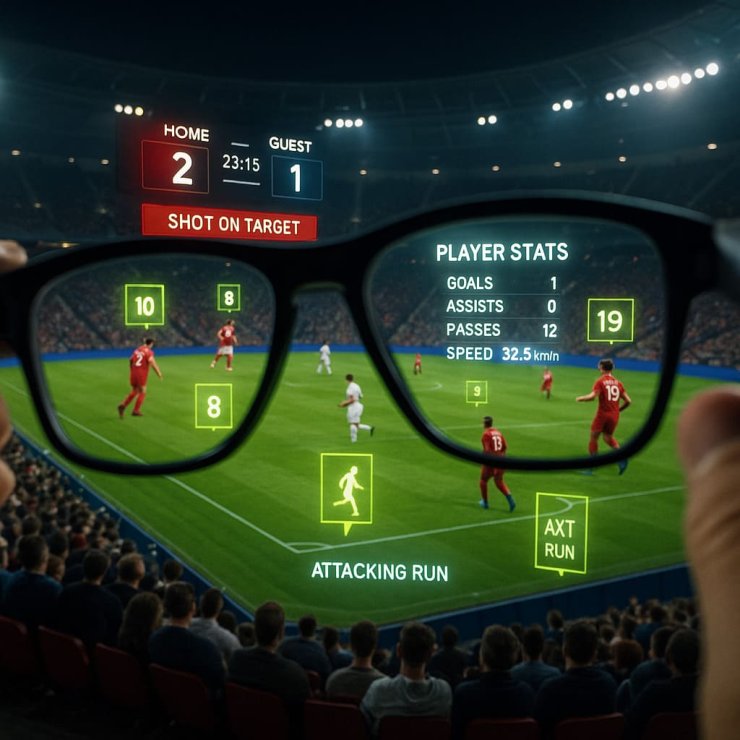
I've watched sports broadcasting change dramatically over the past decade, but nothing quite matches what's happening with augmented reality right now. We're not just talking about fancy graphics anymore — this is about fundamentally changing how we consume live sports content. Digital overlays are providing real-time statistics, player information, and tactical analysis directly within our viewing experience. Platforms like 1xbet live have started integrating these AR capabilities to offer viewers comprehensive data alongside their sports content, and honestly, it's creating broadcasts that are both more engaging and infinitely more informative than what we had before.
Real-Time Data Integration in Sports Broadcasting
The marriage of live data streams with AR technology has been fascinating to observe. AR sports broadcasting innovations demonstrates how real-time statistics can be seamlessly overlaid onto live footage — and the results speak for themselves. Broadcasters are now layering player speed, distance covered, and performance metrics directly onto the field of play. It's like having a statistician whispering in your ear, except the information appears exactly where you need it most.
What's particularly impressive about current AR sports displays:
- Player tracking systems that show individual performance metrics without missing a beat
- Tactical analysis overlays that highlight team formations and movement patterns in real-time
- Statistical comparisons between players that pop up during the most relevant moments
- Interactive elements that let viewers access detailed player histories with simple gestures
- Predictive analytics showing probability outcomes for specific plays (which, I'll admit, can be eerily accurate)
Major sports networks have reported 35% increased viewer engagement when AR overlays are present during broadcasts. The technology works by combining multiple data sources — GPS tracking, computer vision, and statistical databases — into unified visual presentations that don't obstruct the primary action. And that last point is crucial; nobody wants data blocking their view of a game-winning shot.
Stadium Implementation and Fan Experience
Live venue experiences have been transformed in ways I didn't expect when this technology first emerged. Stadium AR technology implementation shows how venues are creating immersive environments that go far beyond traditional scoreboard displays.
Modern stadiums utilize AR systems that can identify individual players and display their statistics when fans point mobile devices at the field. This creates personalized viewing experiences where each fan can access the information most relevant to their interests. Some venues have reported 40% increases in fan satisfaction scores after implementing comprehensive AR systems — and frankly, those numbers don't surprise me.
The technology has proven particularly effective during complex plays where multiple actions occur simultaneously. Fans can now follow individual player movements, understand tactical decisions, and access historical context without missing the live action. This multi-layered approach to sports presentation has changed expectations for live event experiences in ways that traditional broadcasting simply can't match.
But here's what really matters: the technology adapts to how people actually watch sports. Some fans want every statistic available, while others prefer a cleaner viewing experience with occasional data points. The AR systems learn these preferences and adjust accordingly.
Betting Integration and Interactive Features
AR technology has opened up fascinating possibilities for weaving betting information directly into sports viewing experiences — and I have to say, this is where the real innovation is happening. Real-time odds, player performance predictions, and statistical comparisons now appear contextually during broadcasts, which means viewers can make decisions based on what's actually happening rather than what they think might happen.
What's caught my attention is how interactive AR interfaces adapt to individual preferences. The technology learns viewing patterns and figures out which information types each viewer finds most valuable. It's remarkably similar to having a sports analyst who's been watching games with you for years and knows exactly what catches your interest.
Sports betting platforms have discovered that AR integration boosts user engagement by providing immediate context for betting decisions. When viewers can see live performance data right next to historical trends, they're making more informed choices about potential wagers. This has resulted in longer viewing sessions and stronger platform loyalty — which makes sense when you think about it.
The most interesting aspect? The technology doesn't just show you data; it shows you relevant data at relevant moments. A player's shooting percentage appears right when they're lining up a crucial shot. Team formation analysis pops up during tactical switches. It's contextual intelligence that traditional broadcasting simply can't deliver.





Comments